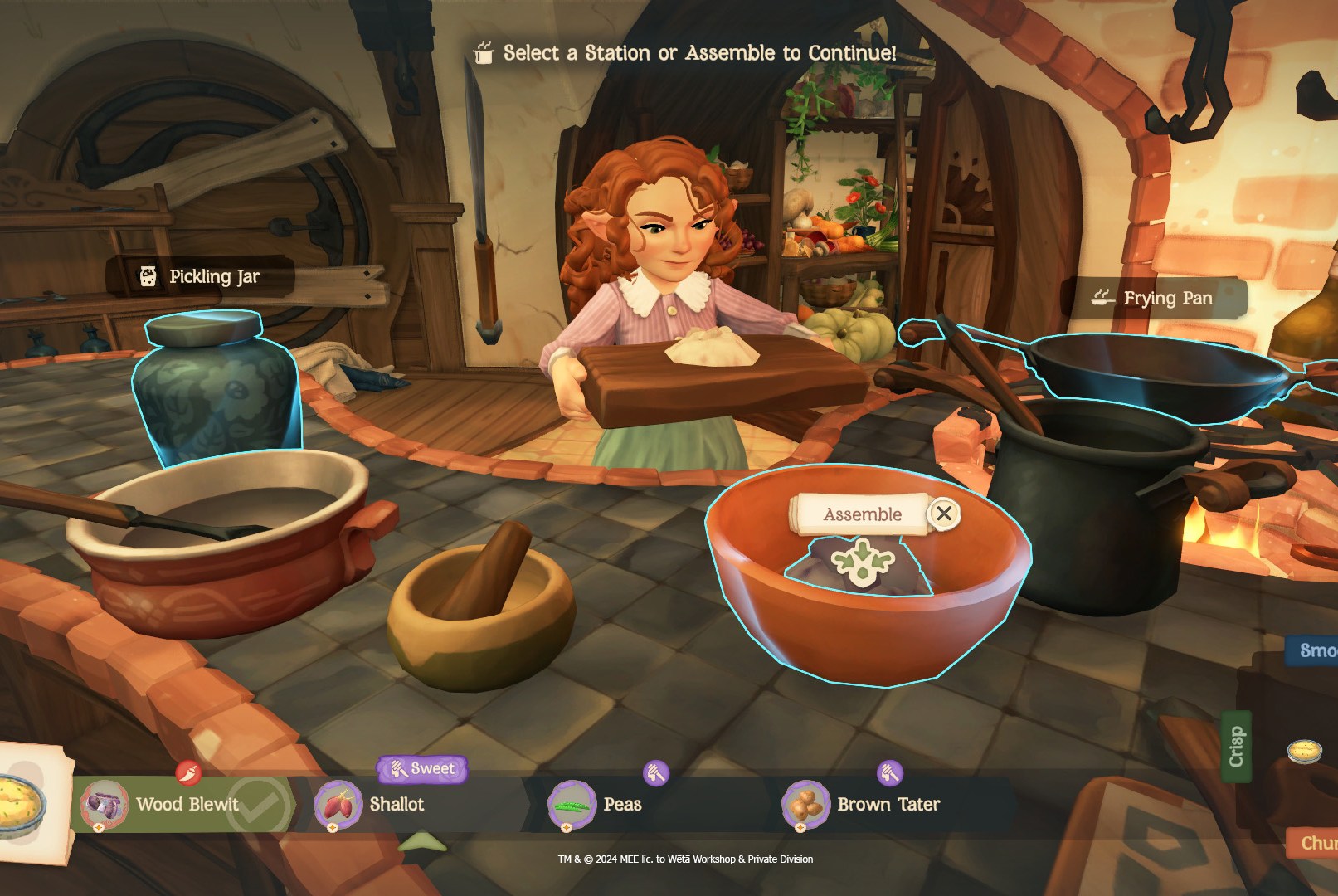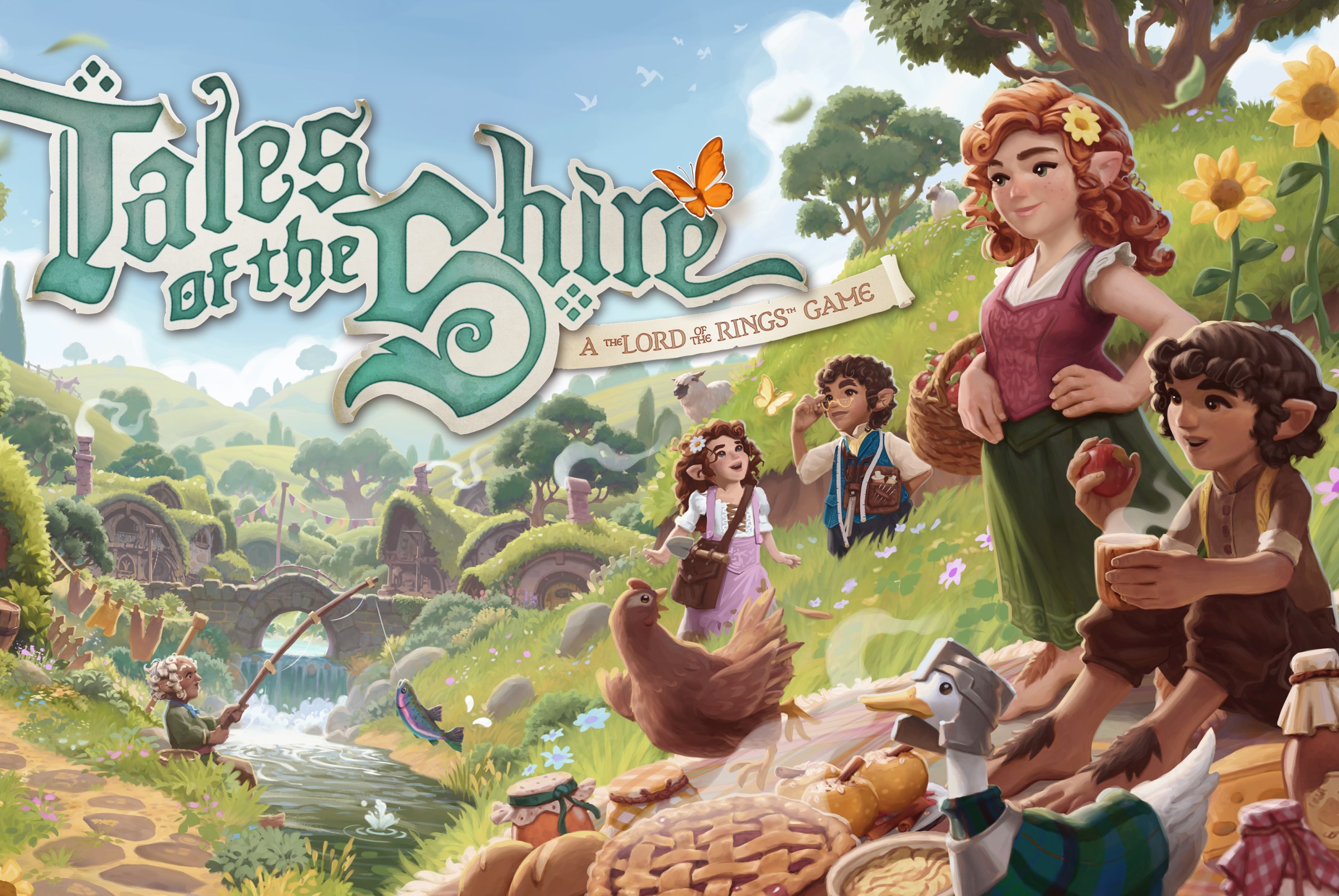We’re living in the middle of a bounty of Middle-earth media. Last year’s wretched Gollum game, 2026’s apparent Gollum duology, The Rings of Power’s elven kings, War of the Rohirrim’s horse maidens, and more video games of various scope and subject reportedly still on the way.

And yet none of the above is giving the one thing I really want to see from a Tolkien adaptation: Something with a completely different aesthetic and tone from Peter Jackson’s 2001 film trilogy. Middle-earth contains more multitudes than fit in those three films, and it’s a shame that the setting has been boxed in by their success.
But this week I got to sit down with the best fresh take on a Lord of the Rings adaptation I’ve seen basically ever: Tales of the Shire: A The Lord of the Rings Game. ToTS is the inaugural project of Rings film veteran Wētā Workshop’s game studio, made in partnership with Private Division, and from what I was able to play of this long-awaited “cosy Hobbit life” simulator, the studio has a winner on its hands.
In April, the game’s first full trailer promised friendship mechanics, cooking, fishing, home decorating, farming, seasonal changes, and other standards of the life sim genre. The demo Polygon was able to play this week covered Tales of the Shire’s first few day/night cycles, putting the player in the role of a newcomer hobbit in the village of Bywater, which lies a few days’ walk from both Hobbiton (home of Bilbo and Frodo) and the human town of Bree (where the Prancing Pony inn is).
My three-ish hours with Tales of the Shire were played on PC, though I also experimented a bit by streaming it to my Steam Deck, where controls were even more intuitive than keyboard and mouse. After activating the demo on Steam, I opened up the achievement list for kicks. Right at the top was one for owning at least three waistcoats.
I considered this an immediate good omen.
After a quick opening cutscene, I was presented with a delightfully robust character creator, featuring an unexpectedly forward-thinking five-point slider for gender (on one end, waists were small and cleavage was notable, and on the other, the reverse) as well as the utterly unique option of customizing my character’s foot hair.
Players can type in their own custom name and surname, but they also have the option to pick from two extensive lists of names seemingly cribbed directly from hobbits mentioned in Tolkien’s work. Which is to say: I didn’t check every one against the books, but I was able to scroll down the list and dub my hobbit with the exact canonical first name I was looking for: that of one of Bilbo’s uncles, Polo Baggins. This wasn’t just another good omen, it was a princely gift.
Tales of the Shire shows a clear and immediate insight into the duality of Tolkien’s hobbits — they have a great capacity to be loyal, forthright, brave, and hardy, which is made all the more surprising by their more observable capacity to be petty, conservative, and frivolous. One of the first things you learn from Orlo Proudfoot, the hobbit who welcomes you to Bywater, is that while big folk work out their differences with swords and arrows, hobbits do it by inviting people over for home-cooked meals. The on-first-reference likening of ToTS’ very chill cooking and meal mechanic to battle gave it a passive-aggressive frame that felt instantly of a piece with Tolkien’s hobbits.
Case in point: I cackled upon realizing that my first extensive quest line was to help a down-to-earth farmer win an argument with the snooty miller over a completely immaterial bit of local minutiae. On god, me and Farmer Cotton were going to rub it into the face of Sandyman the miller. His son’s a craven little collaborator anyway.
But, corroborating case in point: Though you didn’t know her, you inherit your house from a beloved old hobbit lady who recently passed on, and an early quest has you inviting two of her former students over for a meal, to give them fresh happy memories in a place that was so recently full of sorrow. There’s a pleasing sense of history to Bywater, delivered piece by piece in bits and bobs of conversations, and the game wants you to think about how you fit into it.
In prepping the dishes for that meal, it was already apparent that this was going to be a satisfying loop. Invite your guests, wake up the day of the event, check what they’re craving in the game menu, choose your recipes, and gather your ingredients (options available in the demo included fishing, foraging, and gardening). Your pantry, by the way, visually fills up with the specific food you put in it. If you store a tomato, the basket for tomatoes fills up. If you store some mustard weed, the spot on the table where the mustard weed goes then has mustard weed on it. It’s incredibly charming.
Then you cook: Choice of ingredients will lock in stats like Flavors and Deliciousness, but the cooking minigame allows you to tweak for ideal texture, using whatever tools are available in your kitchen (in this demo, only the chopping board and the frying pan). Then you receive your guests, arrange the 3D objects of your finished dishes on the table, and rack up the rewards of “Fellowship” points, gifts, and story progression.
The few in-game days I spent with the demo were enough to get tantalizingly close to achieving my first major plot goal (hosting enough brunches with my neighbors to become accepted as a Bywater “local”) but not to attain it. And reader, I pine. I sent out invitations to lunch, and now I cannot make good on them.
I would say that the bulk of my time in the game was spent in pursuit of NPCs to talk to rather than gathering ingredients with intention, repairing/decorating my somewhat dilapidated home, or cooking; there were lots of tutorial quests to close out. And while the scenery is extremely charming, I could see all that walking around eventually becoming a little repetitive.
But on the other hand, my walks were punctuated by alertness: Keep an eye out for butterflies, because following them is how you find foragable meal ingredients. Check that pond for swirls on the water to stock up on fish. Watch for the blue birds with flared red tail feathers that serve as the game’s wayfinding system. That is, you mark a destination on your map, and instead of a glowing path in the UI, there’s just… helpful birds that fly down at every path junction and face the way you need to go. Effervescent.
I did catch the odd visual bug here and there — hobbits sitting next to benches instead of on them, one odd young man scooting along on his seated legs instead of walking — but Wētā has six months to work out the kinks. Private Division and Wētā Workshop updated the game’s release window from 2024 to the date of March 25, 2025. “Ha ha, NERDS,” I cackled, nerdily, when I read that, because I happen to know off the top of my head that March 25 is the day, by the Shire Calendar reckoning, the One Ring was thrown into Mount Doom and destroyed.
As Gandalf once said of hobbits, “You can learn all that there is to know about their ways in a month, and yet after a hundred years they can still surprise you at a pinch.” With how expertly Wētā appears to understand the cozy hobbit life sim brief, I expect there’s lots more to discover here.
Tales of the Shire: A The Lord of The Rings Game will be released March 25, 2025, on Nintendo Switch, PlayStation 5, Windows PC, Xbox Series X, and Netflix Games.
 Print
Print







